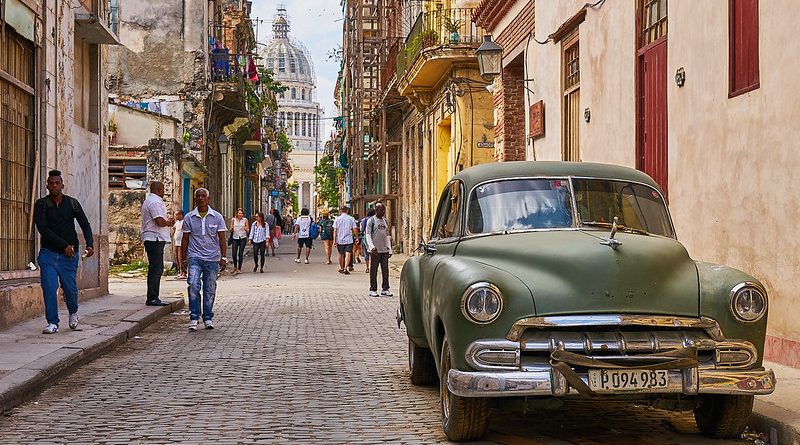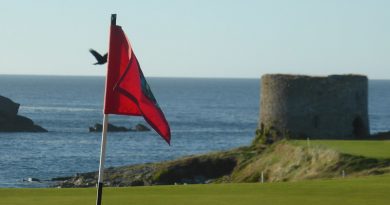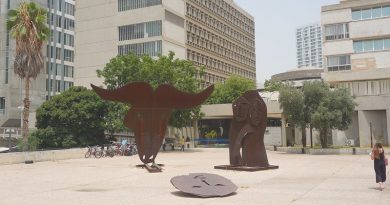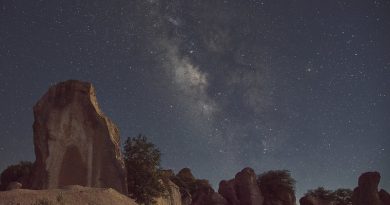Cuba, Haiti and the Dominican Republic: Destinations
Cuba
Havana (La Habana)
With its beautiful colonial architecture, classic cars and laidback people, the capital of Cuba makes for a romantic setting. Despite being Cuba’s second largest city it is number one with the tourists and a great point to start your explorations of Cuban life.
The area of Old Havana (La Habana Vieja) was declared by UNESCO in 1982 to be a world heritage site and recent restoration works mean that many of the grand old buildings now house museums, revolutionary monuments and a wealth of Cuban culture. Check out the Castillo de la Real Fuerza, which is the America’s oldest colonial fortress. The nearby Plaza de la Catedral is more than a beautiful city square, it is home to a market on weekends and the relaxed Plaza life says a lot about the Cuban people. The Museo de la Revolucion houses Che’s beret and bullet holes in the foyer from an assassination attempt against the President in the 1950’s.
Around Havana you will notice the ever-present cigar being smoked, sold and rolled all around town. Cross over the river Rio Almendares into the suburb of Miramar where you will find one of the best cigar shops in Cuba, the Casa del Tabaco (2 blocks west on Quinta and corner of Calle 16). Or you can tour the Corona Cigar Factory, which was built in the 19th century, and is still kept busy supplying the locals and the tourists with high quality cigars.
Pinar Del Rio
Pinar Del Rio is one of the tobacco provinces of Cuba and is located amongst the scenic limestone hills of Vinales. Tobacco from the Pinar Del Rio area is the basis of some of the world’s finest cigars, and this region accounts for about 80% of Cuba’s tobacco production. To see some of this tobacco production in action you could visit the Fabrica de Tobacos Francisco Donatien, which is at Maceo No 157 Oeste and is open weekdays 7:30am-4pm and Saturday 7:30am-11:30am, with admission being around US $2. This factory houses around 80 staff who are busy rolling cigars, and you can purchase some of their finest on site.
Santiago de Cuba
As Cuba’s second largest city, Santiago de Cuba has a thoroughly Spanish feel to the city and the revolution is always on your mind, thanks to the number of monuments and museums that the city boasts. Unlike Havana, the industrial side of Santiago is quite separate to the historical city centre. Any visit to the city wouldn’t be complete without taking the time to peruse the architecture of the city as many of the buildings were built in the 1500’s, including the Casa de Diego Velaquez on Felix Pena no 602 (near the Parque Cespedes) which was built in 1522 and thus holds the honour of being the oldest house still standing in Cuba.
Matanzas
Matanzas is home to many industrial activities, including a sugar refinery, a shoe factory, textile mill, chemical plant and a paper mill. However, you might find more appealing activity in the downtown of Matanzas. Check out the Ediciones Vigia which is a key attraction of Matanza as it is a factory that produces handmade first-edition books in runs of only 200.
Cayo Largo
This lush area is a key location of Cuba’s tourist resorts that cater primarily towards the tourists from the USA and Canada. Shimmering white sands, tropical waters and a great scuba diving environment make Cayo Largo an ideal location for those of you seeking a sun, sand and sea type holiday, despite being somewhat removed from daily Cuban life.
Trinidad
Back in the late 1980’s Trinidad was declared a World Heritage Site. Because of its well-preserved Colonial buildings and quaint atmosphere this town of aprox 50,000 people is a great visit and a chance to see another side to Cuba. Trinidad is home to a number of fantastic museums, with the Museo Historico Municipal being the major attraction.
Holguin
As Cuba’s fourth largest city, Holguin is regarded as a pleasant place to visit, with many parks to be explored and culture to be discovered. During the first week in May, hundreds of organ playing pilgrims, and orchestras flood into Holguin to play in the city squares. Holguin is home to the only music organ factory in Cuba, the Fabrica de Organos, which can be worth a visit. Its located on Taller Polivalente, Carretera de Gibara no 301 (Weekdays 7am-3:30pm)
Haiti
Port-Au-Prince
Port-Au-Prince is the capital of Haiti and a city that teems with activity of every sort. There are plenty of Churches, museums and classical architecture to please any history buff. Also worth noting is the architectural style aptly named Gingerbread Architecture, which, as its name would indicate, is characterised by graceful balconies with Gothic designs and plenty of decorative lattices, which really creates that fairytale Gingerbread house impression. Check out theOloffson Hotel to see this style at its finest.
Jacmel
If Port-au-Prince symbolises the frantic nature of life in Haiti, then Jacmel is its tranquil opposite. The buildings may be crumbling, however, you don’t have to work hard to imagine the city in all its elegant grandeur. This city is a haven for artists, poets and other creative sorts. While in Jacmel, you should check out the paper-mache crafts that the city is renowned for. A walk down Rue St-Anne will unearth many of Jacmel’s paper-mache shops.
Croix des Bouquets
This market town is to the east of Port-au-Prince and is worth a day trip to see one of the biggest livestock markets in Haiti, which occurs every Friday. Croix des Bouquets also boasts some fantastic metal sculpture work, all made from flattened oil drums, and often used to symbolise significant Voodoo icons. You can visit a number of the artists’ workshops in the town.
Trou Caiman
If you love wildlife, then you will find that Trou Caiman is the place in Haiti for water bird watching. Whilst maps will probably read Trou Caiman, locals might refer to the area as Eau Gallee. Trou Caiman is located northeast of Croix des Bouquets and is comprised of a large lage with rice fields and saltbush flats surrounding the lake. The lake is home to a large group of greater flamingos as well as heron and ibis birds, and throughout the year merlin and falcons stop by the lake.
Parc La Visite
For hiking, the trail at Parc La Visite is one of the most breathtaking hikes in Haiti. One particular trail winds from Kenscoff to Seguin along the Massif de la Selle. Whilst the hike will take the best part of the day there is a lovely guesthouse at Seguin.
Cap-Haitien
As the second-largest city in Haiti, Cap-Haitien (or O’Cap to the locals) is a relaxed city with a Spanish feel to it. Check out Rue 17 Boulevard and the rows of artisans’ kiosks located there. Woodcarvings, needlework, paintings, sacred amulets and voodoo souvenirs are all available to buy in this area.
Dominican Republic
Santo Domingo
As the capital, and home to two million people, Santo Domingo is a city of contrasts and festivities. If you are lucky you might be in town for one of the two festivals that Santo Domingo hosts every year – the Merengue Festival and the Latin Music Festival. Also, there are a number of great parks in Santo Domingo to visit if all the hustle and bustle gets too much for you.
Parque Nacional Submarino La Caleta
Only 15 miles southeast of Santo Domingo is this national park which has the main attraction of an underwater section that contains protected coral reefs, as well as a length of shoreline. This is one of the most popular parks in the Dominican Republic, despite being one of the smallest. A mass of coral and a submerged shipwreck make this a great place for divers, especially beginners.
Costa Del Coco
The Costa Del Coco, or ‘Coconut Coast’ is synonymous with the phrase ‘all-inclusive’ resorts. This area stretches from Punta Cana to Playa del Macao and is an area dotted with expensive resorts and expansive stretches of beautiful beaches. If you are in the Dominican Republic to relax and soak up the sun and generally live the good life this is the place for you!
Bahia de Samana
If you are in the Dominican Republic during January or February you have the chance to view the whales during mating season. A great place for whale watching is at the Bahia de Samana, which is located on the north shore of the Dominican Republic, in the Parque Nacional Los Haitises. At the offices of the Victoria Marine, which is located on the Malecon (Samana’s main street) you can organise a reliable whale watching tour for aprox $30 US per person.
By Lorna Musgrove




